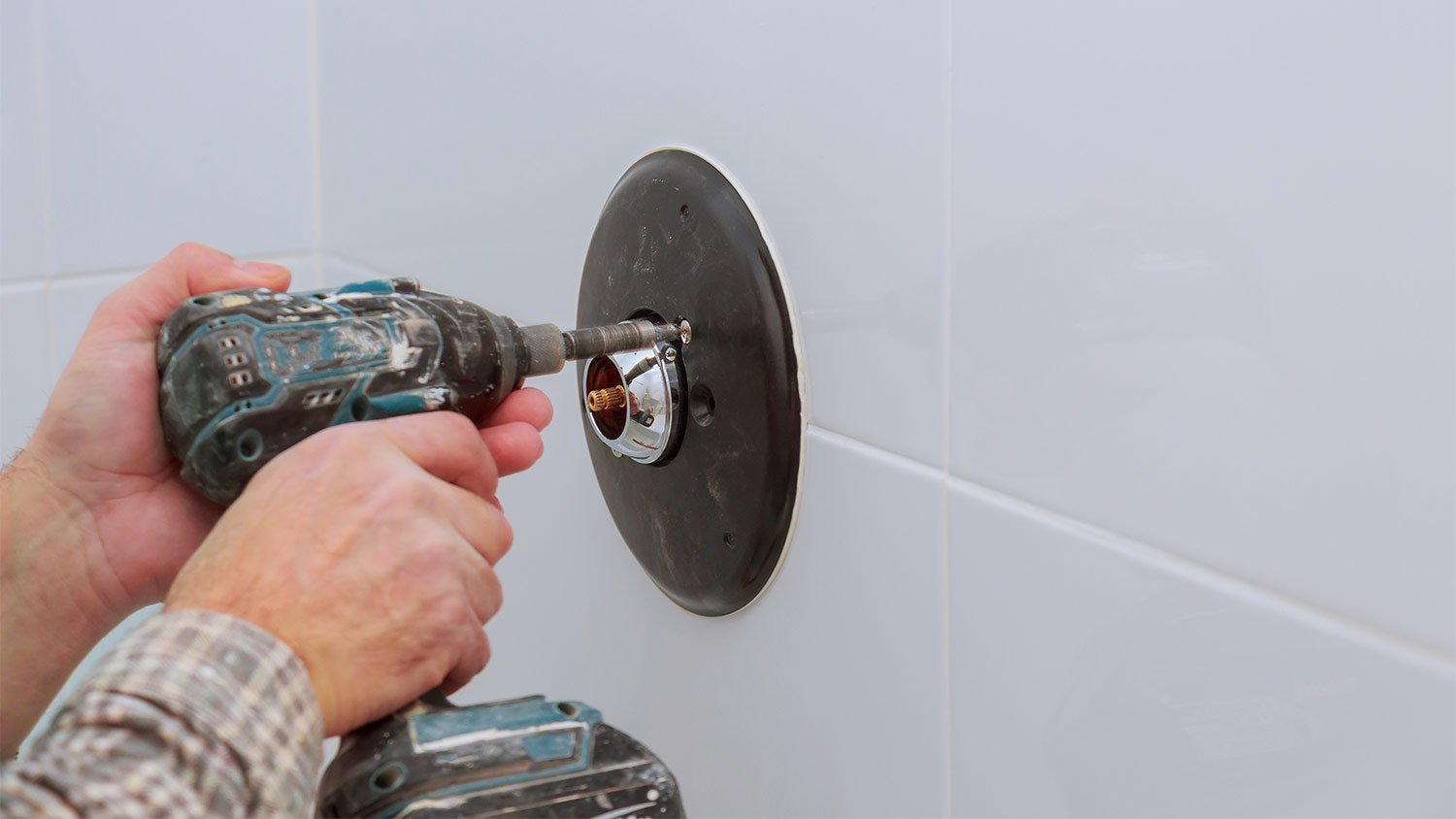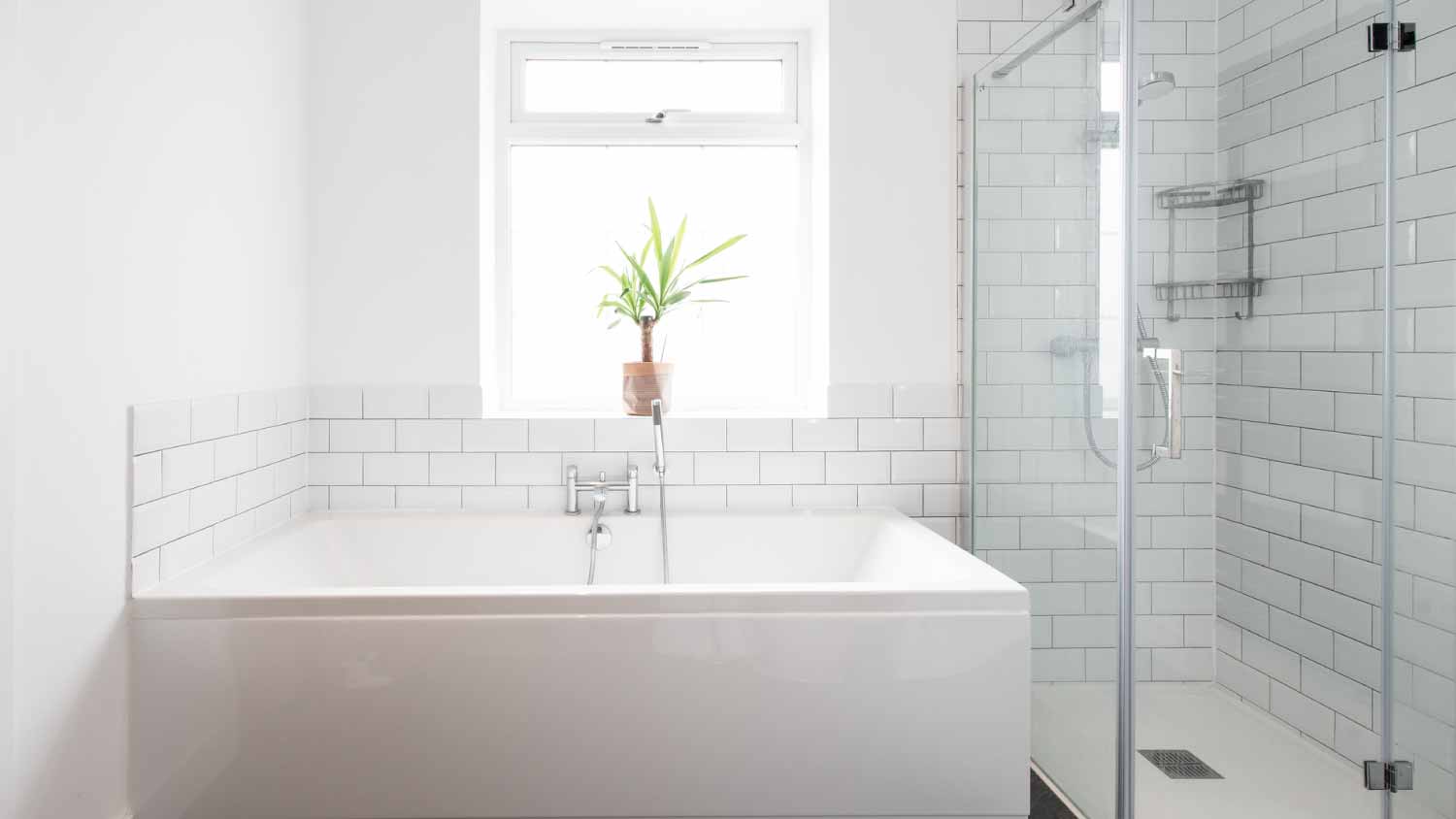
Remodeling your bathroom can add significant value to your home. Your bathroom remodel cost in Columbus, OH will depend on size, fixtures, materials, labor, and other factors.
Update the unsung hero of your shower—the knobs—for a fresh new look


Not all bathroom updates have to be costly or time-consuming, and replacing shower knobs is a prime example. Whether you’re looking for something new to better match your bathroom or your old ones are starting to lose their luster, learn how to replace shower knobs in five simple steps.
The first thing you need to do to change your shower knobs is to turn off the water. You can simply turn off the water to your shower, but you can also turn off the water main.
Next, place a rag over the drain while you’re working. This will help you keep loose screws and parts from accidentally falling down the drain.

Removing your existing shower handles might be easy or difficult, depending on whether there is mineral buildup or corrosion.
To get started, pop off any trim with a flathead screwdriver or a utility knife. Next, unscrew the screw that’s either under the plastic trim or under the handle.
Once that’s done, you can remove the shower handle by twisting the knob until it comes off. If the knob is giving you a hard time, you can apply plumber’s lubricant. If that doesn’t work, then you might need to grab a handle puller from the store. This nifty little tool helps you remove stubborn knobs.

The process of installing new shower knobs is essentially the same whether you have one, two, or three handles. When working with a triple knob setup, you need to keep track of which knob is which. Use tape and a marker to label the position of each handle.
Use plumber’s tape to wrap the base, then position the new handle in place and screw it until it’s tight. If the handle has any decorative trim or plastic knob labels, simply secure them in the correct place. If you have two or three knobs to install, repeat the process for the remaining handles.
Turn the water back on, test the knobs, rotating or pulling them according to the type. Check for any leaks or loose parts.
The most common mistake made when replacing shower knobs is choosing replacements that aren’t compabtible with the shower valve. Unless you’re replacing plumbing along with the knob, the replacement knob should fit the existing fixture and valve. Otherwise, you’ll also need to call a local shower installer or plumber to replace the shower valve.
A final warning: Don’t skip the preparation steps of turning off the water and covering the drain. They might seem simple and unnecessary, but both can save you from dealing with water damage from unnecessary flooding or fishing down the drain for loose screws.
Always turn off the water before starting a plumbing project. Doing so helps protect your home in case of flooding and water damage. You can shut off the water at the faucet or fixture you're working on or turn it off at your home's main shut-off valve.
Over time, shower knobs can develop leaks, cracks, become difficult to turn, or stain with age. All of these are good reasons to replace the knobs. Keep in mind that there are many causes of shower leaks, and replacing the knobs might not be the ultimate solution.
You may also want to replace the knobs if you’re updating your shower. Shower knobs are relatively inexpensive and are easy to work into a bathroom refresh.

Replacing your shower handles and knobs is a great DIY project that you can take on, even as a beginner. It doesn’t take a ton of time, and it’s a fun way to improve the appearance of your shower. Most replacement shower knobs or handles are budget-friendly and cost $10 to $40 each, depending on the style and finish. Designer handles can cost as much as $500.
The required materials are minimal, so the entire project will cost about $40 to $60. It will cost less if you have some of the materials on hand.
However, if you’re having trouble removing your existing handles or you have too much on your to-do list, you can hire a shower installer to help out. Expect to add $45 to $200 to the price of materials for about one hour of labor.
From average costs to expert advice, get all the answers you need to get your job done.

Remodeling your bathroom can add significant value to your home. Your bathroom remodel cost in Columbus, OH will depend on size, fixtures, materials, labor, and other factors.

How much does a showerhead cost? Whether your current showerhead is broken or you want more pressure, you have many options to upgrade your showering experience. Learn the average price for various showerheads, features, and more.

An updated bathtub can give a bathroom a whole new look. Find out how much it costs to replace a bathtub, including prices by type and labor costs.

This handy guide will walk you through 17 types of bathroom sinks to help you decide on the best one for your bathroom remodel.

Knowing how to install a shower requires some skill and experience, but a shower enclosure installation is a doable DIY project if you follow some basic steps.

An updated bathtub can give a bathroom a whole new look. Find out how much it costs to replace a bathtub in Austin, TX, including prices by type and labor costs.